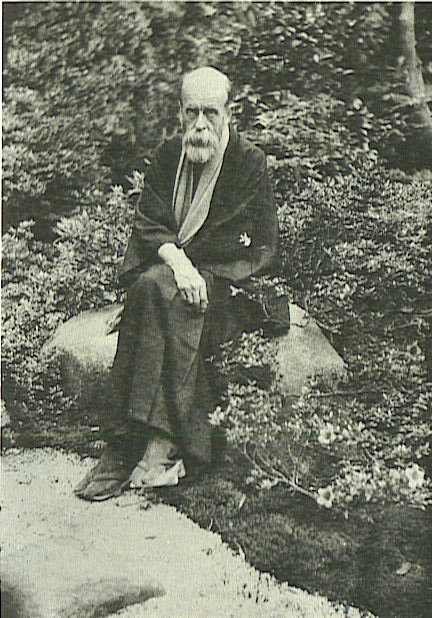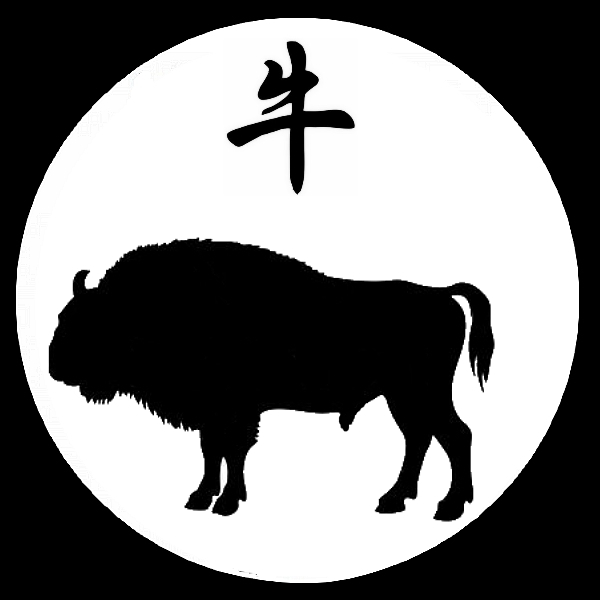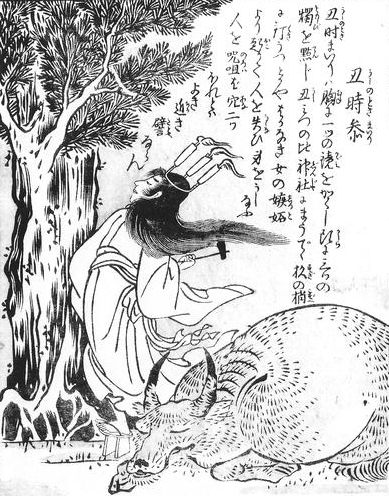|
Kifune Shrine
is a Shinto shrine located at Sakyō-ku, Kyoto, Kyoto Prefecture Japan. History The shrine became the object of Imperial patronage during the early Heian period. In 965, Emperor Murakami ordered that Imperial messengers were sent to report important events to the guardian ''kami'' of Japan. These ''heihaku'' were initially presented to 16 shrines including the Kifune Shrine. From 1871 through 1946, the Kifune Shrine was officially designated one of the , meaning that it stood in the second rank of government supported shrines. The shrine is also associated with the Ushi no toki mairi, the ritual of wearing candles on one's head and laying a curse at a shrine during the "hour of the Ox", since it is from the resident deity that Hashihime (Princess of the Uji Bridge) learns the prescribed ritual to turn herself into an ''oni'' demon to exact vengeance, the story of which is immortalized in the Noh play ''Kanawa'' ("The Iron Crown"). See also * List of Shinto shrines * Twenty ... [...More Info...] [...Related Items...] OR: [Wikipedia] [Google] [Baidu] |
Shinto
Shinto () is a religion from Japan. Classified as an East Asian religion by scholars of religion, its practitioners often regard it as Japan's indigenous religion and as a nature religion. Scholars sometimes call its practitioners ''Shintoists'', although adherents rarely use that term themselves. There is no central authority in control of Shinto, with much diversity of belief and practice evident among practitioners. A polytheistic and animistic religion, Shinto revolves around supernatural entities called the . The are believed to inhabit all things, including forces of nature and prominent landscape locations. The are worshiped at household shrines, family shrines, and ''jinja'' public shrines. The latter are staffed by priests, known as , who oversee offerings of food and drink to the specific enshrined at that location. This is done to cultivate harmony between humans and and to solicit the latter's blessing. Other common rituals include the dances, rites of pass ... [...More Info...] [...Related Items...] OR: [Wikipedia] [Google] [Baidu] |
List Of Shinto Shrines
For lists of Shinto shrines, see: *List of Shinto shrines in Japan **List of Shinto shrines in Kyoto *List of Shinto shrines outside Japan **List of Shinto shrines in Taiwan **List of Shinto shrines in the United States See also *List of Jingū *List of Tōshō-gū A Tōshō-gū (東照宮) is any Shinto shrine in which Tokugawa Ieyasu is enshrined with the name Tōshō Daigongen (東照大権現). This list may never be complete given the widespread veneration of Tōshō Daigongen. * Dewa Sanzan Tōshō-g� ... {{Authority control List * ... [...More Info...] [...Related Items...] OR: [Wikipedia] [Google] [Baidu] |
Richard Ponsonby-Fane
Richard Arthur Brabazon Ponsonby-Fane (8 January 1878 – 10 December 1937) was a British academic, author, specialist of Shinto and Japanologist. Early years Richard Arthur Brabazon Ponsonby was born at Gravesend on the south bank of the Thames in Kent, England to John Henry and Florence Ponsonby. His boyhood was spent in the family home in London and at the Somerset country home, Brympton d'Evercy, of his grandfather, Spencer Ponsonby-Fane."A Biographical sketch of Dr. R. Ponsonby-Fane," ''Studies in Shinto and Shrines,'' p. 517. Ponsonby was educated at Harrow School. He added "Fane" to his own name when he inherited Brympton d'Evercy in 1916 after the deaths of both his grandfather and father. Career In 1896, Ponsonby traveled to Cape Town to serve as Private Secretary to the Governor of the British Cape Colony.Ponsonby-Fane, p. 518. For the next two decades, his career in the British Empire's colonial governments spanned the globe. He worked closely with a number of c ... [...More Info...] [...Related Items...] OR: [Wikipedia] [Google] [Baidu] |
University Of Hawaii Press
A university () is an institution of higher (or tertiary) education and research which awards academic degrees in several academic disciplines. Universities typically offer both undergraduate and postgraduate programs. In the United States, the designation is reserved for colleges that have a graduate school. The word ''university'' is derived from the Latin ''universitas magistrorum et scholarium'', which roughly means "community of teachers and scholars". The first universities were created in Europe by Catholic Church monks. The University of Bologna (''Università di Bologna''), founded in 1088, is the first university in the sense of: *Being a high degree-awarding institute. *Having independence from the ecclesiastic schools, although conducted by both clergy and non-clergy. *Using the word ''universitas'' (which was coined at its foundation). *Issuing secular and non-secular degrees: grammar, rhetoric, logic, theology, canon law, notarial law.Hunt Janin: "The university i ... [...More Info...] [...Related Items...] OR: [Wikipedia] [Google] [Baidu] |
Mark Teeuwen
Mark J. Teeuwen (Marcus Jacobus Teeuwen, born 9 February 1966, Eindhoven) is a Dutch academic and Japanologist. He is an expert in Japanese religious practices, and he is a professor at the University of Oslo.University of Oslo faculty CV/ref> In a 2002 essay called From Jindō to Shinto: A Concept Takes Shape, he traced the evolution of the term "Shinto" from the reconstructed pronunciation ''Jindō'' at the time of the Nihon Shoki until today, describing the changes its meaning has gone through. Early life Teeuwen was awarded his MA at the University of Leiden in 1989. His earned a Ph.D. at Leiden in 1996. Career From 1994 through 1999, Teeuwen was a Lecturer at the Japanese Studies Centre, University of Wales in Cardiff. Since 1999, he has been Professor of Japanese at the University of Oslo. Teeuwen's critical examination of religious practices in Japan is considered ground-breaking. His published work has been informed by his historical research. Historicity is construed ... [...More Info...] [...Related Items...] OR: [Wikipedia] [Google] [Baidu] |
John Breen (scholar)
John Lawrence Breen (born 3 March 1956) is a British academic and Japanologist. He is a specialist in Japanese history at the in Kyoto. He writes in English and Japanese on the history of Shinto and the imperial institution. Early life Breen was awarded his BA at the University of Cambridge in 1979. He earned a Ph.D. in 1993 at Cambridge. Career From 1985 through 2008, Breen was a Lecturer, Senior Lecturer and Reader in Japanese at the School of Oriental and African Studies in London. He is currently Professor at the International Research Centre for Japanese Studies. He is also Editor-in-Chief of the peer-reviewed journal ''Japan Review''. Breen's critical examination of religious practices in Japan has been informed by his historical research. Historicity is construed as a fundamental component of Breen's view of Shinto.Rambelli, Fabio "Dismantling stereotypes surrounding Japan's sacred entities,"''Japan Times.'' July 15, 2001 Breen's work on Shinto is influenced by the ... [...More Info...] [...Related Items...] OR: [Wikipedia] [Google] [Baidu] |
Modern System Of Ranked Shinto Shrines
The was an organizational aspect of the establishment of Japanese State Shinto. This system classified Shinto shrines as either official government shrines or "other" shrines. The official shrines were divided into #Imperial shrines (''kampeisha''), which are parsed into minor, medium, or major sub-categories; and #National shrines (''kokuheisha''), which are similarly categorized as minor, medium, or major.Institute for Japanese Culture and Classics, Kokugakuin University Glossary of Shinto Names and Terms, ''Kampei Taisha.''/ref> Some shrines are the "first shrines" called ''ichinomiya'' that have the highest rank in their respective provinces of Japan. The Ise Grand Shrine stood at the top of all shrines and thus was outside the classification. History On the fourteenth day of the fifth month of 1871, by decree of the Dajō-kan, the fundamental elements of the modern shrine system were established: a hierarchic ranking of Shinto shrines, with specification of the grades of ... [...More Info...] [...Related Items...] OR: [Wikipedia] [Google] [Baidu] |
Twenty-Two Shrines
The of Japan is one ranking system for Shinto shrines. The system was established during the Heian period and formed part of the government's systematization of Shinto during the emergence of a general anti-Chinese sentiment and the suppression of the Taoist religion. It involved the establishment of the shrines as important centers of public life in Japan. It played a role in official imperial ceremonies such as the ''Practice of Chinkon''. An extensive body of literature also emerged containing information about each shrine, including the shrine's origin, priestly dress, divine treatises, the system of shrine removal, subordinate shrines, and annual cycle of rituals, among others. By the year 806, 4,870 households were assigned to Shinto shrines while the government provided a national endowment for their upkeep. These shrines also received special offerings from the Imperial Court. As time progressed, this offering to the shrines was amended so that Imperial envoys were only ... [...More Info...] [...Related Items...] OR: [Wikipedia] [Google] [Baidu] |
Hashihime
("the maiden of the bridge") is a character that first appeared in Japanese Heian-period literature, represented as a woman who spends lonely nights waiting for her lover to visit, and later as a fierce “oni” or demon fueled by jealousy. She came to be associated most often with a bridge in Uji. Biography Very little is known about the origin of Hashihime. The most common interpretation is that she was a lonely wife pining for her husband / lover to return but due to his infidelity, she became jealous and turned into a demon. Japanese literature Hashihime first appears in a Kokinshu (ca. 905) poem, of which the author is unknown: :“Upon a narrow grass mat :laying down her robe only :tonight, again – :she must be waiting for me, :Hashihime of Uji” Hashihime's name also appears in Murasaki's '' The Tale of Genji'', as the title of a chapter. She is also mentioned several times in the waka poems throughout the work. Legend In earlier times, the term simply referred to ... [...More Info...] [...Related Items...] OR: [Wikipedia] [Google] [Baidu] |
Sakyō-ku, Kyoto
is one of the eleven Wards of Kyoto, wards in the Municipalities of Japan, city of Kyoto, Kyoto, Kyoto, in Kyoto Prefecture, Japan. It is located in the northeastern part of the city. History The meaning of ''sakyō'' (左京) is "on the Emperor's left." When residing in the Kyoto Imperial Palace the Emperor of Japan, emperor would sit facing south, thus the eastern direction would be to his left. Similarly, there is a ward to the west called Ukyō-ku, Kyoto, Ukyō-ku (右京区), meaning "the ward on the Emperor's right." In old times, ''sakyō'' was referring to the eastern part of the capital, but the present Sakyō-ku is bounded to the west by the Kamo River and is thus outside the historical capital. It was created in 1929 when it was split off from Kamigyō-ku, Kyoto, Kamigyō-ku. Geography It is located in the north-east corner of Kyoto city. In the east, it borders the city of Ōtsu, Shiga, Ōtsu in Shiga Prefecture. In the south Sanjō Street separates it from Hi ... [...More Info...] [...Related Items...] OR: [Wikipedia] [Google] [Baidu] |
Ox (zodiac)
The Ox ( 牛) is the second of the 12-year periodic sequence (cycle) of animals which appear in the Chinese zodiac related to the Chinese calendar, and also appears in related calendar systems. The Chinese term translated here as '' ox'' is in Chinese ''niú '' ( 牛), a word generally referring to cows, bulls, or neutered types of the bovine family, such as common cattle or water buffalo. The zodiacal ox may be construed as male, female, neutered, hermaphroditic, and either singular or plural. The Year of the Ox is also denoted by the Earthly Branch symbol ''chǒu'' ( 丑). The term "zodiac" ultimately derives from an Ancient Greek term referring to a "circle of little animals". There are also a yearly month of the ox and a daily hour of the ox ( Chinese double hour, 1:00 a.m. to 3:00 a.m.). Years of the oxen (cows) are cyclically differentiated by correlation to the Heavenly Stems cycle, resulting in a repeating cycle of five years of the ox/cow (over a sixty-year ... [...More Info...] [...Related Items...] OR: [Wikipedia] [Google] [Baidu] |
Ushi No Toki Mairi
or refers to a prescribed method of laying a curse upon a target that is traditional to Japan, so-called because it is conducted during the hours of the Ox (between 1 and 3 AM). The practitioner—typically a scorned woman—while dressed in white and crowning herself with an iron ring set with three lit candles upright, hammers nails into a of the Shinto shrine. In the modern-day common conception, the nails are driven through a straw effigy of the victim, impaled upon the tree behind it. The ritual must be repeated seven days running, after which the curse is believed to succeed, causing death to the target, but being witnessed in the act is thought to nullify the spell. The Kifune Shrine in Kyoto is famously associated with the ritual. Also variously called , , . Overview Sources say that common method of the ritual developed during the Edo period (1603–1868)., citing The woman performing the curse is generally portrayed as dressed in white, with disheveled hai ... [...More Info...] [...Related Items...] OR: [Wikipedia] [Google] [Baidu] |


.jpg)


